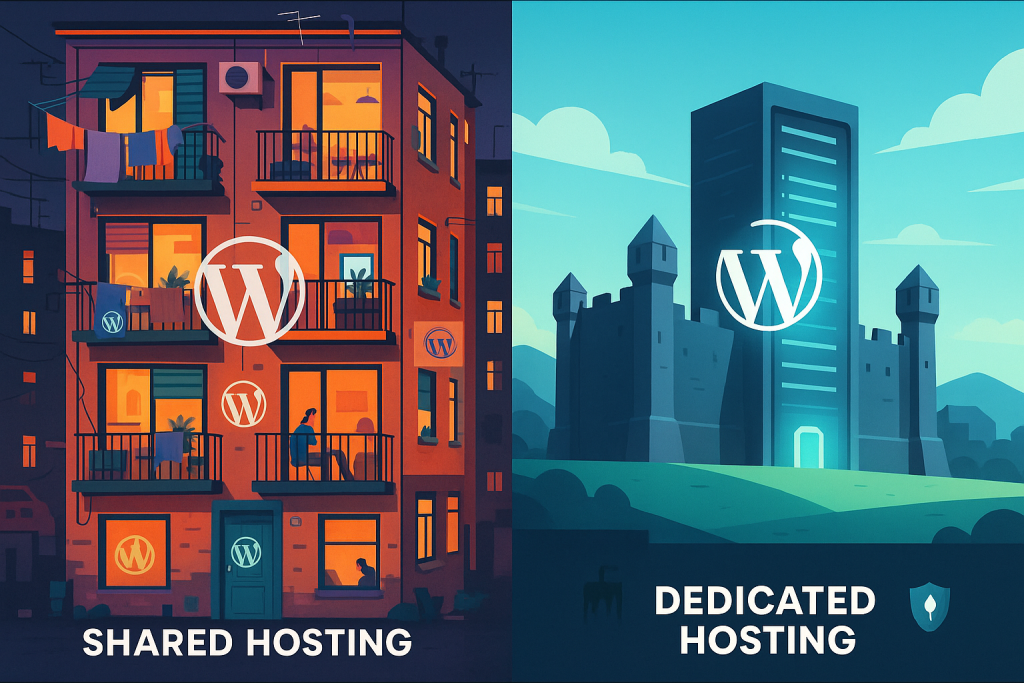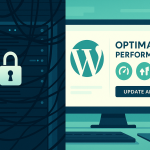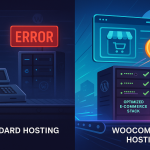When you first launch a WordPress website, the excitement is almost overwhelming. You have your content, your design, and your vision. But then you hit a crucial roadblock: hosting.
The world of web hosting can feel like a maze of technical terms, confusing acronyms, and price tags that swing from “almost free” to “maybe I need a second mortgage.” Two terms you will encounter right away are Shared Hosting and Dedicated Hosting.
The choice between them isn’t just about the monthly cost; it’s about the very future of your website. It dictates your site’s speed, its security, its reliability, and ultimately, its capacity to grow from a small passion project into a thriving business.
This deep-dive guide is designed to cut through the jargon. We’re going to break down Shared vs. Dedicated WordPress hosting using simple analogies and practical, real-world scenarios. By the time you’re done reading, you won’t just know the difference—you’ll know exactly which one is the perfect home for your WordPress site, both today and tomorrow.
Analogy 101: The Apartment Building vs. The Private Estate
The easiest way to understand the difference between shared and dedicated hosting is to think about real estate:
🏠 Shared Hosting: The Apartment Building
In a shared hosting environment, your website is like an apartment unit in a large building.
- You Share Everything: You share the same physical server (the building) with dozens, or even hundreds, of other websites (the tenants). This means you share the resources: the CPU (the heating/AC unit), the RAM (the water pressure), and the disk space (the general storage space).
- Affordable: Because the cost of the entire building is split among many tenants, your rent (monthly fee) is very low.
- The “Bad Neighbor” Effect: If the tenant next door (another website) suddenly throws a massive, resource-draining party (a huge traffic spike or a poorly coded script), the shared resources get strained. The water pressure drops for everyone, meaning your website could slow down or even crash, through no fault of your own.
- Limited Control: You can’t knock down walls or install a custom security system. The landlord (the hosting provider) manages the server, setting the rules for everyone.
🏰 Dedicated Hosting: The Private, Managed Estate
In a dedicated hosting environment, your website is the sole resident of its own private estate and a dedicated physical server.
- You Own Everything: The entire server’s CPU, RAM, and storage are 100% yours. No one else’s activities can affect your site’s performance.
- Total Control: You have the keys to everything. You can configure the server’s operating system, install custom software, and implement security measures precisely tailored to your needs.
- High Performance Guaranteed: Because you don’t share, your site gets lightning-fast loading speeds and stability, no matter how much traffic you get.
- More Expensive: Since you are paying for the entire server, not just a slice of it, the cost is significantly higher.
Deep Dive: Shared WordPress Hosting – The Starter Home
Shared hosting is the undisputed champion of the budget-friendly, entry-level website. It’s where 90% of new WordPress sites begin, and for good reason.
The Major Advantages (The ‘Pros’)
- Unbeatable Price Point (The Wallet-Saver):
- Shared plans are usually priced between $2.99 and $15 per month. This affordability is game-changing for new bloggers, small businesses establishing a basic online presence, and entrepreneurs testing a new idea. Splitting the server cost across hundreds of clients makes it cheap for everyone.
- Ease of Use & Minimal Technical Skill Required (The “Set It and Forget It” Feature):
- The hosting provider handles almost everything: server setup, hardware maintenance, security patches, system updates, and basic monitoring.
- It comes with user-friendly control panels (like cPanel) and one-click WordPress installation, meaning you can literally launch your site in under 10 minutes without ever touching a line of code.
- Built-in Support:
- Since the host manages the server, their support team is your first line of defense for almost any issue, from a downed site to an email configuration problem.
- Excellent for Starters:
- If you’re launching a personal blog, a small local business brochure site, or a portfolio, shared hosting offers more than enough resources to handle the low to moderate traffic you’ll see in the first 1-2 years.
The Hidden Drawbacks (The ‘Cons’)
- The “Bad Neighbor” Performance Hit (Unpredictable Speed):
- This is the biggest downside. If another site on your server suddenly goes viral, or if one of the other tenants is running a poorly optimized, resource-hogging application, the overall server performance drops. Your site will slow down, which can hurt your Google rankings (SEO) and drive away visitors.
- Resource Limitations (The Bottleneck):
- Shared hosting has hard caps on the amount of CPU and RAM your site can use. Once your traffic starts growing or you install a few resource-intensive plugins (like complex e-commerce or learning management systems), you will hit these limits. The host will often warn you or, in extreme cases, temporarily suspend your site.
- Security Vulnerability (The Shared Front Door):
- While reputable hosts isolate accounts, sharing a server always carries an inherent, albeit small, risk. If a very vulnerable neighbor gets hacked, the attacker could potentially exploit a security loophole in the server configuration to breach other sites.
- Limited Control and Customization:
- You cannot choose the operating system (OS), the specific version of PHP, or install server-level caching software. You must use the host’s configuration, which is designed to be a “one-size-fits-all” solution.
Deep Dive: Dedicated WordPress Hosting – The Enterprise Powerhouse
Dedicated hosting is the ultimate upgrade. It’s the choice for high-stakes, high-traffic, and high-security websites where performance failure is simply not an option.
The Major Advantages (The ‘Pros’)
- Peak Performance and Blazing Speed (The Speed Limit is Gone):
- With 100% of the server’s CPU, RAM, and bandwidth available exclusively to your WordPress site, you get unmatched speed and stability. Page load times are minimal, which is critical for user experience and search engine optimization. Your site will handle major traffic spikes (like a Black Friday sale or a mention on a national news site) with ease.
- Unbreakable Security Isolation (Your Own Fortress):
- Since your site is the only one on the server, the “bad neighbor” effect is eliminated entirely from a security perspective. You don’t have to worry about a vulnerability in another site affecting yours. Furthermore, you have the control to implement enterprise-grade security tools, custom firewalls, and tailored intrusion detection systems.
- Complete Root Access and Customization (Total Control):
- This is a developer’s dream. You gain root access, which means you can install any operating system (Linux, Windows), use a specific database configuration, and install specialized server software to perfectly optimize your WordPress installation. This allows for fine-tuning that is impossible on a shared plan.
- Compliance Requirements (For Sensitive Data):
- If your business handles sensitive customer data, such as credit card transactions (PCI DSS compliance) or patient health information (HIPAA), a dedicated, isolated server is often a mandatory requirement to meet strict regulatory standards.
- Ultimate Scalability:
- Your server’s resources are fixed but vast. If you need more power, your hosting provider can easily upgrade the hardware (add more RAM, faster drives) without having to migrate your site to a new server entirely.
The Significant Disadvantages (The ‘Cons’)
- High Cost (The Price of Exclusivity):
- A dedicated server can cost anywhere from $80 to over $500 per month. This is a major operating expense and is only justifiable for websites that are generating a significant income or serving a massive user base.
- Technical Expertise Required (The Need for a SysAdmin):
- With great power comes great responsibility. If you choose an unmanaged dedicated server, you are solely responsible for setting up, configuring, and maintaining the operating system, patching security vulnerabilities, monitoring performance, and backing up data. This requires the expertise of a system administrator (SysAdmin).
- Note: You can pay extra for a Managed Dedicated Server, where the host handles the maintenance, but this adds to the already high cost.
- Resource Commitment:
- You are paying for the whole server, whether you use 10% of its capacity or 100%. While this is great for stability, a lot of the power might go unused for long periods, making the cost-per-use very high compared to a more flexible solution like Cloud Hosting.
The Mid-Tier Bridge: VPS and Managed WordPress Hosting
It’s important to note that the jump from Shared to Dedicated hosting is massive. Fortunately, the hosting industry has evolved to offer powerful, scalable options that sit right in the middle. These are the “condos” and “townhouses” of the hosting world.
| Hosting Type | Analogy | Key Benefit | Who It’s For |
| VPS Hosting (Virtual Private Server) | The Condo | Dedicated, guaranteed resources within a shared physical server. | Developers, medium-sized businesses, sites that need root access but can’t afford a dedicated server. |
| Managed WordPress Hosting | The Luxury Townhouse | Ultimate performance optimization and 100% hands-off management, optimized ONLY for WordPress. | High-traffic blogs, agencies, eCommerce sites that don’t want the technical burden. |
Often, a VPS (Virtual Private Server) is the true next step after outgrowing Shared hosting, offering a segmented portion of a physical server with guaranteed, non-shared resources. It’s a great way to get a performance boost without the full leap in price and complexity of a Dedicated server.
The Million-Dollar Question: When Do You Need to Upgrade?
Choosing your hosting isn’t about picking the most expensive option; it’s about right-sizing your infrastructure to your website’s actual needs. Here is a practical roadmap for when to stay Shared and when to start looking at a Dedicated solution.
✅ STAY on Shared Hosting IF:
- You are a Beginner: This is your first website, blog, or portfolio.
- Your Budget is Tight: You need to keep operating costs at a minimum (under $15/month).
- Your Traffic is Low-to-Moderate: You see less than 10,000-20,000 visitors per month.
- Your Site is Static: It’s mainly informational (a brochure site) with few dynamic elements (like complex forms or large databases).
- You Hate Technical Jargon: You want the host to handle all the backend maintenance.
🛑 UPGRADE to Dedicated Hosting (or a high-end VPS/Cloud) IF:
- You Are Hitting Resource Limits: Your host is sending you frequent warnings about CPU or RAM usage, or your site is often slow during peak hours.
- You Handle Sensitive Data: You run an eCommerce store processing payments, a healthcare site, or a financial service site that requires strict regulatory compliance (PCI, HIPAA).
- You Cannot Afford Downtime: Every minute your site is down costs your business thousands of dollars (e.g., a major eCommerce store, a SaaS platform).
- Your Traffic is Consistently High: You average over 100,000 unique visitors per month and need the guaranteed performance to handle sudden spikes.
- You Need Full Control: You require the ability to run custom server software, a specific OS, or highly tailored security configurations that are not available on shared plans.
- Your Site Runs Resource-Heavy Applications: You run large membership sites, a high-volume online course platform (LMS), or a massive database-driven web application.
The Final Comparison Table: Shared vs. Dedicated
| Feature | Shared Hosting | Dedicated Hosting |
| Cost (Per Month) | $3 – $15 (Low) | $80 – $500+ (High) |
| Performance | Basic; can be inconsistent (Bad Neighbor Effect) | Exceptional; guaranteed high speed and stability |
| Resources | Shared with many other websites | 100% Dedicated to your website |
| Traffic Handling | Low to moderate (up to ~20k/month) | Extremely High (100k+ to millions/month) |
| Security | Basic, managed by host; higher risk of cross-site vulnerability | Advanced, isolated; full customization of security protocols |
| Control/Access | Limited; no root access; forced host configurations | Full (Root Access); complete control over all software/OS |
| Technical Knowledge | Minimal (Beginner-Friendly) | High (Requires a SysAdmin, or a Managed Service) |
| Best For | Personal blogs, small business brochure sites, new projects. | Large eCommerce, high-traffic media, large web applications, enterprise-level sites. |
Conclusion: Choose the Right Tool for the Job
Your web hosting is the foundation of your online success. Choosing between Shared and Dedicated hosting should be a strategic decision, not a financial one based only on the lowest price.
For 9 out of 10 WordPress beginners, Shared Hosting is the correct starting point. It’s cheap, easy, and will serve your site perfectly well until your traffic grows into the thousands.
But remember the warning signs: slow loading times, frequent downtime during traffic spikes, and resource limit warnings are your hosting telling you it’s time to move out of the apartment building. When you’re ready to make that leap, whether to a powerful VPS or a full Dedicated server, you’ll be investing directly into the speed, reliability, and security that your growing business deserves.
By understanding the key differences, you ensure your WordPress site not only launches successfully but has a clear, powerful path for scaling up as your digital ambitions expand.



